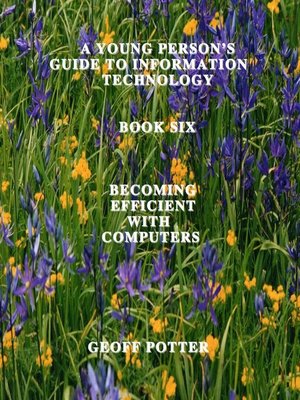Becoming Efficient With Computers
ebook ∣ A Young Person's Guide To Information Technology
By Geoff Potter

Sign up to save your library
With an OverDrive account, you can save your favorite libraries for at-a-glance information about availability. Find out more about OverDrive accounts.
Find this title in Libby, the library reading app by OverDrive.



Search for a digital library with this title
Title found at these libraries:
| Library Name | Distance |
|---|---|
| Loading... |
This is the sixth book in a series of ten electronic books designed to educate young children and school-age students about information technologies and the digital world they live in.
Who will benefit from this book?
This book is most suitable for young people in their fifth, sixth or seventh grade level at school.
For students with little or no prior knowledge of ICT and computing, it is effective when used in conjunction with Books Four, Five and Seven.
It may also be helpful for teachers introducing ICT or integrating it into the curriculum.
Contents:
Book Six comprises six modules:
Module 1: The Keyboard
The theme of this module is learning how to keyboard efficiently and comfortably. The first unit explores the ergonomics of sitting at a desk keyboarding: how to avoid physical discomfort. This is followed by two units exploring the efficient use of a keyboard. The more efficient a student is at keyboarding the less time he/she will spend typing. Students are offered the opportunity to practice and test their keyboarding skills.
Unit One: Ergonomics
Unit Two: The Keyboard
Unit Three: Keyboarding Techniques
Module 2: Using Models and Simulations
The theme of this module is the effective and creative use of computer simulations and models and the relationship between computing, research and inventiveness.
Unit One: How Do We Identify a Challenge?
Unit Two: What Can We Learn from Communicating with a Computer?
Unit Three: Making Projects with Scratch
Unit Four: Let's Explore Simulations
Unit Five: Learning from Simulations
Module 3: The Mathematics of Computing
Computing and mathematics are interwoven. In some ways computing is a practical and creative application of mathematics. This module explores the relationship between mathematics and computing: the history, the theory and the logic.
Unit One: Computational Mathematics: Sorting, Classifying and Storing Data
Unit Two: Learning to Program with Alice
Module 4: Working With The Internet
This module introduces students to the Internet: its history and its primary uses, including its technical nature and how to search efficiently. The components of email, chat systems and search engines are also explored.
Unit One: What Is The Internet?
Unit Two: Using The Internet
Unit Three: Making Web Pages from Templates
Unit Four: Email
Unit Five: The World Wide Web
The book is colorful, creative and contains many challenges and activities designed to help young students understand how digital technologies work and how they may efficiently use them to learn and communicate.
The book also contains an integrated Continuous Assessment process which may be of value in some educational environments.
Modules at each level are divided into skills and knowledge-focused units.
At the end of each unit students may assess their skills and knowledge and grade themselves.
There are no tests or examinations in this program.
What are the intended uses of this book?
1.This book is designed to support both teachers and students in existing ICT curricula and may be useful in areas such as Science, Language Arts, Mathematics and the Arts.
2.The book supports public and private education systems' instruction and skills training programs to ensure that young people possess the knowledge and skills to function in a digital society, and ultimately to prepare them for entry into higher education and an increasingly digital and computer-based workforce.
3. Students and parents may use the book for home schooling use in support of study projects and personal skills development.







